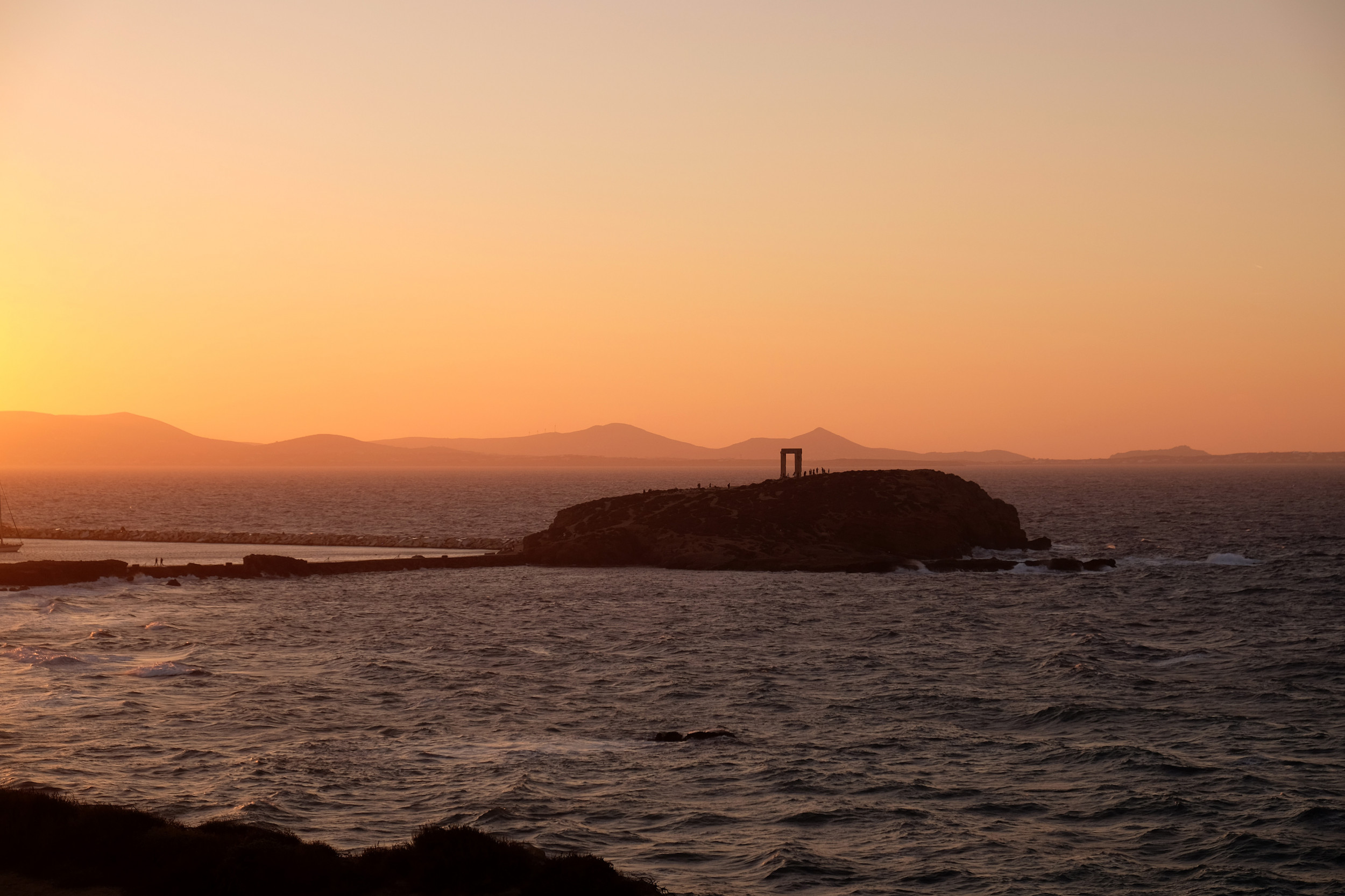一个国际研究小组发现证据表明Homo sapiens尼安德特人在200,000年前居住在一个岛屿上,这表明我们的物种比先前的估计早数万年开始穿越地中海。
这些发现被汇编成一份研究发表在杂志上科学进步10月16日。加拿大安大略省麦克马斯特大学的一个团队领导了在希腊东部纳克索斯岛上长达数年的挖掘工作,并由此得出了这个发现。
根据总结麦克马斯特发表的发现中,地中海岛屿以前被认为是仅在9000年前才有人定居的,当时是石器时代狩猎采集者的后代,他们已经在欧洲大陆居住了100多万年。这是因为人类学家认为只有那些现代人,像他们一样老练智人s能够建造船只,将它们运送到岛屿上。因此,学者们早就假设爱琴海,希腊大陆和土耳其之间地中海的一部分,在尼安德特人和早期是不可通行的智人。

2017年10月14日,希腊纳克索斯,日落时分阿波罗神庙的全景,位于港口附近的一个小岛上。
然而,这项研究的作者发表在科学进步这表明爱琴海的海平面在冰河时期的某些时候要低得多,这将暴露出一条史前人类可以穿越的土耳其和希腊之间的陆地路线。
此外,该研究详细描述了追溯到200,000年前的人类活动的证据,史泰达是1981年在纳克索斯西北海岸发现的史前采石场。他们很早就发现了证据智人尼安德特人和其他现已灭绝的人类物种利用那里的岩石创造了打猎、木工、烹饪和制作衣服的工具。
“这里提供的数据表明,古代人和现代人比以前认为的要早几万年到达爱琴海,”该研究指出。
卡特说,虽然爱琴海的纳克索斯这样的岛屿会因为其丰富的淡水自然资源而吸引早期人类,“进入这个地区之前的尼安德特人将面临一个新的、具有挑战性的环境,有不同的动物、植物和疾病,所有这些都需要新的适应策略”。
麦克马斯特大学人类学教授、该项研究的主要作者特里斯坦·卡特说:“直到最近,世界的这一部分还被认为与早期人类研究无关。”。"但是结果迫使我们彻底反思地中海岛屿的历史."
卡特与希腊文化和体育部内Cycladic Ephorate古迹考古主任迪米特里斯·阿萨纳苏利斯(Dimitris Athanasoulis)一起进行了这项工作。
这项研究是斯特利达·纳克索斯考古项目始于2013年。除了加拿大和希腊之外,该项目的网站称,它还包括来自法国、塞尔维亚、土耳其、英国和美国的学者。
HUMANS CROSSED THE MEDITERRANEAN SEA TENS OF THOUSANDS OF YEARS EARLIER THAN PREVIOUSLY THOUGHT, SAYS STUDY
An international team of researchers has found evidence suggesting that early Homo sapiensand Neanderthals inhabited an island 200,000 years ago, suggesting that our species began crossing the Mediterranean Sea tens of thousands of years earlier than previous estimates.
The findings were compiled into a study published in the journal Science Advances on October 16. The years-long excavation on the eastern Greek island of Naxos that resulted in the findings was led by a team from McMaster University in Ontario, Canada.
According to a summary of the findings published by McMaster, the Mediterranean islands were previously thought to have been settled only 9,000 years ago, by farming descendants of the Stone Age hunter-gatherers who had inhabited mainland Europe for over a million years. This was because anthropologists held that only those modern humans, as sophisticated Homo sapiens, were capable of building vessels that could carry them across long stretches of water to the islands. For this reason, scholars had long postulated that the Aegean Sea, the part of the Mediterranean between mainland Greece and Turkey, was impassable for Neanderthals and early Homo sapiens.

A general view of the Apollo Temple at sunset located on an islet near the harbour on October 14, 2017 in Naxos, Greece.
However, the authors of the study published in Science Advances suggest that the sea level of the Aegean was much lower at some points during the Ice Age, which would have exposed a land route between Turkey and Greece that prehistoric humans would have been able to cross.
Furthermore, the study details evidence of human activity stretching back 200,000 years at Stelida, a prehistoric stone quarry on the northwest coast of Naxos that was discovered in 1981. They found evidence that early Homo sapiens, Neanderthals and other now-extinct human species used the rocks there to create tools for hunting, woodworking, cooking and making clothes.
"The data presented here indicate that the Aegean was accessible to archaic and modern humans tens of millennia earlier than previously thought," the study read.
While islands in the Aegean like Naxos would have attracted early humans because of their fresh water abundance of natural resources, "in entering this region the pre-Neanderthal populations would have been faced with a new and challenging environment, with different animals, plants and diseases, all requiring new adaptive strategies," Carter said.
"Until recently, this part of the world was seen as irrelevant to early human studies," Tristan Carter, an anthropology professor at McMaster University and the study's lead author, said. "But the results force us to completely rethink the history of the Mediterranean islands."
Carter conducted the work with Dimitris Athanasoulis, head of archaeology at the Cycladic Ephorate of Antiquities within the Greek Ministry of Culture and Sports.
The study is part of the Stelida Naxos Archeological Project, which began in 2013. Besides Canada and Greece, the project's website says that it also involves scholars from France, Serbia, Turkey, the United Kingdom and the United States.






